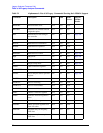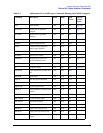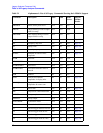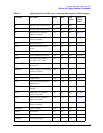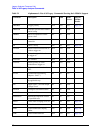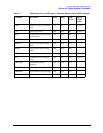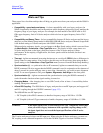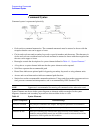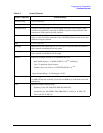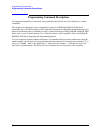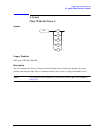
72
Hints and Tips
Hints and Tips
Hints and Tips
These pages lists a few hints and tips that will help you get the most from your analyzer and the N9061A
application.
•
Compatibility - speed and consistency - for best compatibility with your legacy analyzer, the
N9061A application should be used on the analyzer whose frequency range most closely matches the
frequency range of your legacy analyzer. For example, the best match for the 8563E with its 26.5
GHz upper frequency limit is X-Series analyzer which also has an upper frequency limit of 26.5
GHz.
•
Compatibility and Sweep Times - for best compatibility between X-Series analyzers and the legacy
analyzers, use the Manual Swept mode for 8566A/B, 8568A/B Series analyzers. Manual Swept mode
is the default setting on X-Series analyzers with N9061A installed.
When analyzing stationary signals, you can change to the Best Speed setting, which is accessed from
the
Mode Setup > Preferences > Swp Type Rule menu. This results in faster sweep times on a
X-Series analyzer than on the legacy analyzers because of the X-Series analyzer’s better
performance. In the majority of applications, this faster speed would be desirable, but that is not
always the case.
•
Time-out - Agilent recommends increasing the timeout on a serial poll (SPOLL) due to differences in
Sweep Times on some settings. Note, however, that this may not be necessary when using the Best
Speed setting on the
Preferences > Swp Type Rule menu (accessed from the Mode Setup hardkey).
•
Synchronization (1) - to synchronize after an IP command, Agilent recommends that you use the
DONE command. We also suggest that the DONE command is used in conjunction with a timeout of
about 5 seconds in case the analyzer starts to auto align. Alternatively, you could set auto alignment
to Off. To set auto alignment to Off, press
System, Alignments, Auto Align on the front panel.
•
Synchronization (2) - Agilent recommends that synchronization (using the DONE command) is
used with marker functions when signal tracking is turned on.
•
Changing Modes - After changing into or out of RLC mode, allow at least a 1 second delay before
sending subsequent commands.
•
AC and DC Coupling - The 8560 Series of legacy analyzers have one RF input port, and support AC
and DC coupling through the COUPLE command (page 133).
The 8568A/B has two RF input ports:
— DC Coupled (with a BNC connector) to handle a frequency range of 100 Hz to 1.5 GHz
— AC Coupled (with an N Type connector) to handle a frequency range of 100 kHz to 1.5 GHz
WARNING If the input signal to the X-series analyzer has a DC component, ensure that
when you select a legacy instrument with a possible coupling change to DC,
the input signal does not exceed the input specifications of the X-series
analyzer.
The X-series analyzers also have one RF input port. When using the X-Series analyzers, you must use
DC coupling to see calibrated frequencies of less than 20 MHz. Signals of less than 20 MHz are not



